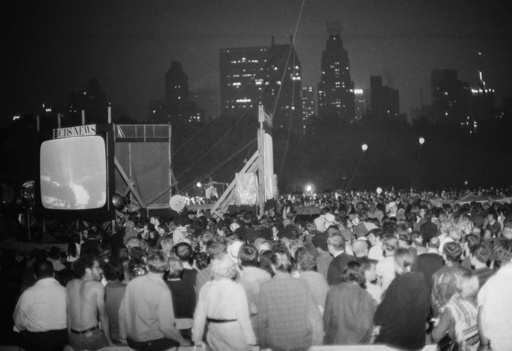The 55th anniversary of the first lunar landing coincides this weekend with a full moon, offering plenty of opportunities to celebrate Neil Armstrong and Buzz Aldrin’s historic achievement. Aldrin, the last surviving member of the Apollo 11 crew, will be the highlight of a gala at the San Diego Air and Space Museum. The event will feature astronaut Charlie Duke, who played a vital role during the moon landing in 1969.
Jim Kidrick, President of the museum, expressed excitement for hosting the celebration on the exact date of one of the most significant moments in American and global history. For those unable to attend events in San Diego, Cape Canaveral, or Houston, various other options are available to commemorate the moon landing, such as watching the new film “Fly Me to the Moon” starring Scarlett Johansson.
Additionally, the Smithsonian Institution’s National Air and Space Museum has created a special website dedicated to all things Apollo 11. Don’t forget to marvel at the full moon on Saturday night and Sunday morning to mark this special occasion.
Various tributes to Apollo 11 are taking place, including a moon fest at NASA’s Kennedy Space Center, located just a few miles from where the historic mission launched. Houston’s Johnson Space Center, known for Mission Control, is also participating in tribute events. In a historic moment, Armstrong and Aldrin landed on the moon in their lunar module, Eagle, with Armstrong famously stating, “The Eagle has landed.”
Armstrong’s iconic words, “One small step for man, one giant leap for mankind,” marked his historic first steps on the moon’s surface. Celebrations in Wapakoneta, Ohio, where Armstrong grew up, and New Concord, Ohio, where John Glenn hailed from, are also planned. Aldrin’s memorable quote “Magnificent desolation” reflects the astronauts’ experience on the lunar surface.
Following their exploration, the Apollo 11 crew splashed down in the Pacific Ocean and were recovered by the USS Hornet. The capsule holding the astronauts was delivered to a museum in Alameda, California, where a splashdown party is being held on the ship. The Apollo program successfully landed 12 astronauts on the moon between 1969 and 1972.
Looking to the future, NASA’s Artemis program aims to send astronauts around the moon next year as part of a new lunar exploration initiative. The program, named after Apollo’s twin sister in Greek mythology, plans for a manned mission to land on the moon at a later date no earlier than 2026.
This website uses cookies so that we can provide you with the best user experience possible. Cookie information is stored in your browser and performs functions such as recognising you when you return to our website and helping our team to understand which sections of the website you find most interesting and useful.
